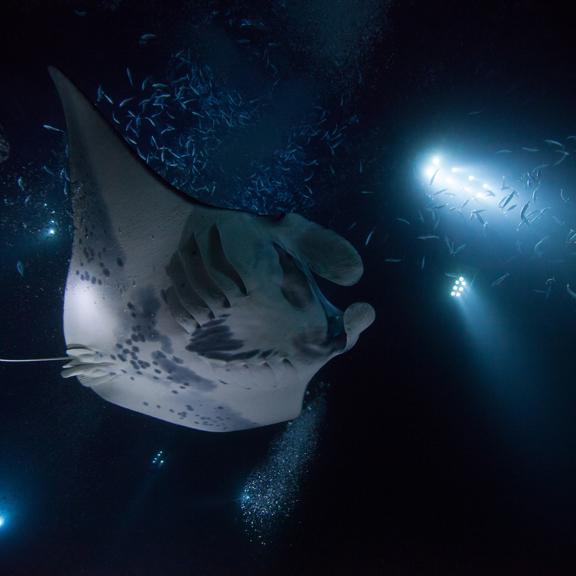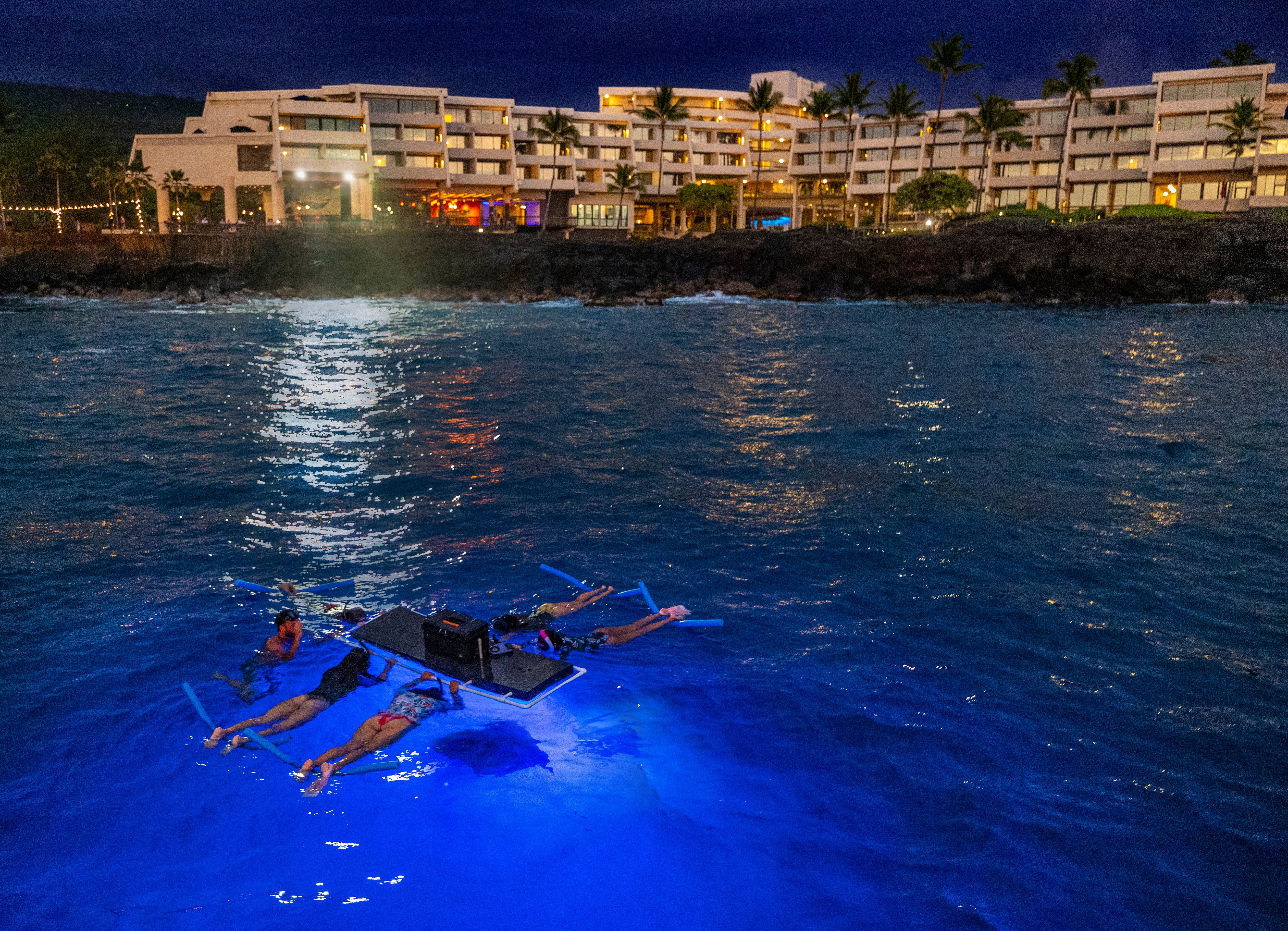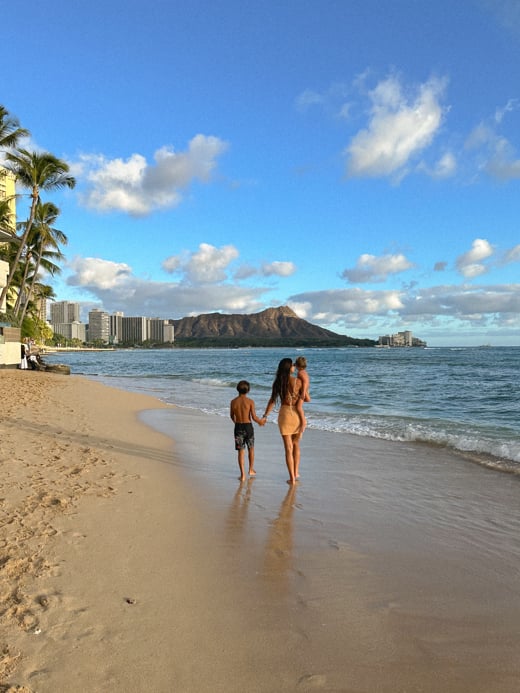Choisissez une langue
Choose a Currency

La magie des raies manta : en conversation avec "Manta Man" Keller Laros
La Grande île d'Hawaï est une destination de choix pour l'aventure, des sanctuaires de la forêt nuageuse aux volcans enflammés. Mais l'une des choses les plus intéressantes à faire sur la côte occidentale de Kona est dans l'eau : plongée avec masque et tuba et plongée sous-marine avec la majestueuse raie manta.
Personne n'est plus passionné par cette douce créature que Keller Laros. Nous avons discuté avec ce célèbre défenseur et défenseur de la nature des raies manta à Kona, de l'essor des scientifiques citoyens et de son enthousiasme à l'idée que de plus en plus de gens puissent eux aussi côtoyer les mantas.
Le "Manta Man"
 Keller Laros est fasciné par les raies manta depuis ses premiers jours de plongée à Kona. En 1985, Keller est devenu instructeur de l'Association professionnelle de plongée et a depuis enregistré plus de 14,000 plongées. Sur 1993, Keller et un groupe de voyagistes locaux ont établi des règles de sécurité pour protéger à la fois les plongeurs et les raies manta. La règle principale : Observer seulement - ne pas toucher les raies manta !
Keller Laros est fasciné par les raies manta depuis ses premiers jours de plongée à Kona. En 1985, Keller est devenu instructeur de l'Association professionnelle de plongée et a depuis enregistré plus de 14,000 plongées. Sur 1993, Keller et un groupe de voyagistes locaux ont établi des règles de sécurité pour protéger à la fois les plongeurs et les raies manta. La règle principale : Observer seulement - ne pas toucher les raies manta !
Sur 2002, Keller a fondé la Manta Pacific Research Foundation afin de poursuivre sa mission de sauvetage et de défense de cette magnifique espèce et des eaux dans lesquelles elle vit. Manta Pacific est une association à but non lucratif 501(c)3 dont la mission est de poursuivre la recherche, l'éducation et la conservation des raies manta et de l'environnement marin.
"Mon message est de prendre soin de notre océan - pas seulement ici et maintenant, mais pour nous, nos enfants et nos petits-enfants," Keller.
De gentils géants

Les raies manta de Big Island sont principalement des raies manta de récif, connues sous le nom de Mobula alfredi. Avec une envergure pouvant atteindre 12 pieds, elles font partie des plus grands poissons du monde.
Le dessous de chaque raie manta présente des taches distinctes, semblables à des empreintes digitales, qui peuvent être utilisées pour l'identification. Manta Pacific a utilisé ces motifs pour créer une base de données de plus de 330 raies manta individuelles identifiées à Kona Hawaii.
Nage nocturne avec les mantas

La côte de Kona est l'un des meilleurs endroits au monde pour observer ces raies manta de près. C'est ce que vous pouvez faire à Keauhou Bay, juste en face de l'OUTRIGGER Kona Resort & Spa.
Vous verrez les raies manta en action lorsqu'elles remontent à la surface pour se nourrir de plancton. Les dispositifs de flottaison des plongeurs avec tuba éclairent le plancton environnant, ce qui attire les raies manta à proximité, qui se rassemblent pour se nourrir, et vous pourrez flotter à leurs côtés.
Vous pouvez également assister à des observations quotidiennes de raies manta au crépuscule et à des conférences au Manta Learning Center d'OUTRIGGER, où vous découvrirez leurs habitudes et leurs habitats, ce qui les attire sur le littoral de Kona et comment les courants océaniques influencent leur comportement. Et n'oubliez pas la Journée mondiale des mantas, qui se 16 déroulera2023 sur le site,, avec des présentations d'experts locaux, nationaux et internationaux sur les raies mantas et l'environnement marin.
Tous dans la famille

Dans la baie de Keauhou, on compte actuellement quelques centaines de raies manta. Des recherches génétiques récentes ont montré que ces nageurs puissants pourraient facilement se rendre sur différentes îles d'Hawaï, mais qu'ils restent près de chez eux et migrent rarement à travers les canaux profonds entre les îles : l'équivalent d'une femelle se déplaçant entre les groupes d'îles tous les 500 - 1,500 ans et d'un mâle seulement tous les 50-150 ans environ.
Cela a créé une famille de raies manta "" dans la baie.
"Aujourd'hui, nous faisons des biopsies de tissus pour analyser l'ADN ... afin d'obtenir des points de données pour déterminer à quel point les différentes populations sont différentes ou proches et pour construire un arbre généalogique : qui est apparenté à qui ? Tantes, oncles, cousins ?" explique Keller. "Dans certaines régions du monde, elles voyagent davantage, mais les raies manta de l'île d'Hawaï restent ici !"
Scientifiques citoyens et durabilité
 Big Bertha, photo de Bo Pardue
Big Bertha, photo de Bo Pardue
L'une des mantas les plus connues est connue sous le nom de Big Bertha. Keller raconte : "Lorsque j'ai rencontré Bertha pour la première fois sur 1991, elle était déjà adulte. Je l'ai revue récemment et elle fait la même taille. Elle a probablement 30 ou 40 ans."
Les citoyens peuvent contribuer à l'application de suivi des raies manta de la côte de Kona pour partager leurs observations et leurs photos et pour aider à suivre les mouvements de ces créatures. Actuellement, plus de 300 raies uniques ont été répertoriées.
Encore plus cool : si vous êtes l'un des premiers à découvrir une nouvelle raie manta (grâce aux taches uniques sur leur ventre), vous aurez peut-être l'honneur de lui donner un nom ! Comme l'explique M. Keller, l'un des noms les plus récents donnés par des citoyens est Quarantina, nommé d'après, vous l'aurez deviné, une observation faite pendant la pandémie.
Un avenir radieux

Avec plus de personnes dans l'eau, plus de GoPros et plus de scientifiques citoyens, déclare Keller, il y a aussi une plus grande prise de conscience. Ce soutien supplémentaire est vital car les raies manta sont confrontées à divers problèmes dans leur habitat naturel, qu'il s'agisse de l'enchevêtrement dans les lignes de pêche ou de la dégradation de l'habitat.
La Manta Pacific Research Foundation continue également à collaborer avec les communautés locales, les opérateurs de plongée, les chercheurs et les législateurs pour étudier la migration et promouvoir les efforts de conservation. Et grâce à la passion et à l'engagement pour la conservation d'individus comme Keller, ses contemporains et les scientifiques citoyens d'aujourd'hui, les mantas de la baie de Keauhou à Hawaï continuent de prospérer.
"Les gens viennent sur la Grande île pour le volcan et les raies manta," dit Keller. "C'est un attrait considérable. C'est pourquoi il est si important de prendre soin d'eux et de leur offrir la meilleure expérience possible à Hawaï."
Découvrez d'autres façons de vous impliquer et séjournez à Kona pour découvrir vous-même la majesté et la magie de ces doux géants des mers.
